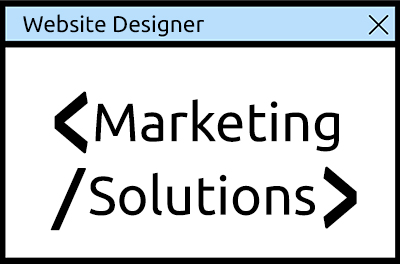E-commerce website design, How do I start selling online?
Are you ready to take your business to the next level and start selling online? With more consumers turning to e-commerce than ever before, now is the perfect time to launch your own online store. But where do you start? In this blog post, we’ll guide you through the process of designing an e-commerce website that will attract customers and drive sales. From creating a user-friendly interface to choosing payment options, we’ve got everything you need to know to get started and succeed in the world of online retail. So let’s dive in!
Creating an E-commerce Website
An eCommerce website is a website that allows you to sell products and services online. In order to create an eCommerce website, you will need to choose a web hosting service and a domain name. Once you have chosen a web hosting service and a domain name, you will need to design your website. You can either design your website yourself or hire a web designer to design your website for you. Once your website is designed, you will need to add products and services to your website. You can either add products and services yourself or hire someone to add products and services for you. Finally, you will need to promote your website so that people can find it when they search for products and services that you offer.
We specialise in the website design and internet marketing
If you’re reading this, chances are you’re considering starting an eCommerce business. And if you’re looking to build an online store, you’ve come to the right place.
We specialize in website design and internet marketing for eCommerce businesses. We’ll help you get your store up and running quickly and efficiently, and we’ll also provide ongoing support to ensure that your business is successful.
There are a few things to keep in mind when starting an eCommerce business, but don’t worry – we’ll guide you through every step of the process. So let’s get started!
What are the Best Practices for E-commerce Website Design?
When it comes to eCommerce website design, there are a few best practices that you should always keep in mind. First and foremost, your website should be easy to navigate and user-friendly. Customers should be able to find what they’re looking for quickly and easily, without any confusion.
In addition, your eCommerce site should be visually appealing and informative. The design should be professional and inviting, and the product descriptions should be clear and concise. You should also make sure to include high-quality images of your products.
Finally, your website should be optimised for search engines so that potential customers can easily find you online. Make sure to use relevant keywords throughout your site, and consider investing in paid search advertising. By following these best practices, you can ensure that your eCommerce website is successful.
How do I Start Selling Online?
Starting an online business can be a daunting task, but with careful planning and execution, it can be a successful endeavor. The first step is to create a plan. This plan should include the products or services you will sell, your target market, your budget, and your eCommerce website design. Once you have a plan in place, you can begin designing and building your eCommerce website.
There are many different platforms and templates available to help you create a professional looking website. Shopify, Woocommerce, and Magento are all popular eCommerce platforms. If you are not familiar with web design or coding, there are many drag and drop builders that can help you create a beautiful website without any technical knowledge.
Once your website is up and running, it’s time to start promoting your products or services. You can do this through social media, email marketing, content marketing, or paid advertising. The key is to drive traffic to your website and convert those visitors into customers.
If you’re ready to start selling online, follow these steps to get started:
1) Create a business plan: Decide what products or services you will sell, who your target market is, and how much you are willing to spend on setting up and promoting your eCommerce website.
2) Design your eCommerce website: Choose a platform or template and build out your website. Make sure it is easy to use and navigate so that potential customers will
The Different Types of E-commerce Platforms
There are four main types of e-commerce platforms: marketplaces, managed marketplaces, webstores, and social commerce. Each type has its own benefits and drawbacks, so it’s important to choose the right platform for your business.
Marketplaces are online platforms that connect buyers and sellers, such as Amazon and eBay. Marketplaces are a great option for businesses that want to get started selling online quickly and easily. However, businesses that sell on marketplace platforms face stiff competition from other sellers, and may have less control over their brand and product listings.
Managed marketplaces are similar to marketplaces, but with more features and support for businesses. Managed marketplaces, such as Shopify and BigCommerce, provide businesses with tools to create professional-looking stores and manage their inventory. These platforms also give businesses more control over their branding than marketplace platforms. However, managed marketplaces typically charge higher fees than marketplaces.
Webstores are e-commerce websites that businesses build themselves using website builder tools or hiring a web developer. Webstores give businesses complete control over their store design, product listings, branding, and marketing. However, building a webstore can be time-consuming and expensive.
Social commerce platforms allow businesses to sell products directly on social media sites like Facebook and Instagram. Social commerce is a great option for businesses that have a strong social media presence and want to make it easy for their customers to buy their products. However, social commerce platforms can
How to Optimize Your E-commerce Website for Search Engines
There are a few key things you can do to optimize your e-commerce website for search engines:
1. Use keyword-rich titles and descriptions for your products. This will help potential customers find your products more easily when they are searching for them online.
2. Make sure your website is easy to navigate and user-friendly. This will help both customers and search engines index your pages more effectively.
3. Use high-quality images and videos to showcase your products. This will help improve your click-through rate and keep potential customers engaged on your site.
4. Use relevant, targeted keywords throughout your website content to ensure that you are being found for the right searches.
5. Keep your website updated regularly with fresh content to maintain a high ranking in search engines.
Creating an Effective Marketing Strategy for Your E-commerce Website
An effective marketing strategy is key to the success of any e-commerce website. Without a solid plan in place, it can be difficult to attract and retain customers. There are a number of factors to consider when developing a marketing strategy for an e-commerce website, including the target audience, the products or services offered, and the budget.
The first step is to identify the target audience. Who are you trying to reach with your e-commerce website? Once you know who your target audience is, you can begin to develop a marketing strategy that will appeal to them. Consider what kinds of products or services they are looking for and how you can best reach them.
Next, determine what kind of budget you have to work with. Marketing can be expensive, so it’s important to set a realistic budget and stick to it. There are a number of free or low-cost marketing strategies that can be effective, so don’t feel like you have to spend a lot of money to be successful.
Finally, think about how you want to promote your e-commerce website. There are a number of ways to do this, including search engine optimization (SEO), social media marketing, and email marketing. Choose the strategies that will work best for your business and your budget. With a little effort and planning, you can develop an effective marketing strategy that will help your e-commerce website succeed.
Conclusion
Starting an online business can be a daunting task, but with the right e-commerce website design and marketing strategy in place you can make it happen. We have provided key tips that will help you get started on your journey to selling online. From choosing the best platform for your needs, understanding SEO basics and optimizing page speed, to creating relevant content and driving traffic to your site – these are all important steps towards launching a successful e-commerce store. With hard work and dedication, you’ll be able to start selling online quickly so don’t wait any longer – get going today!



